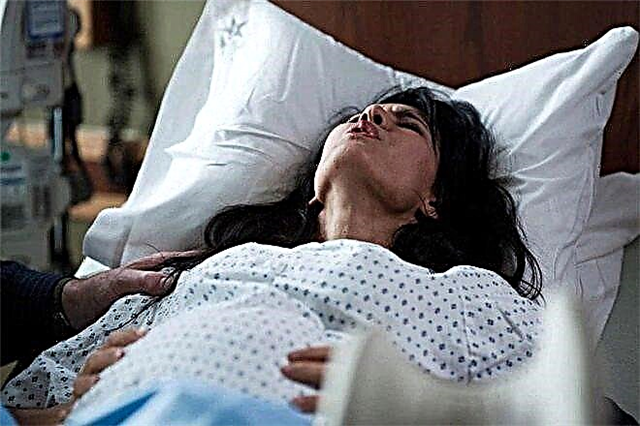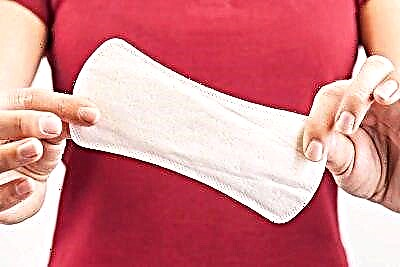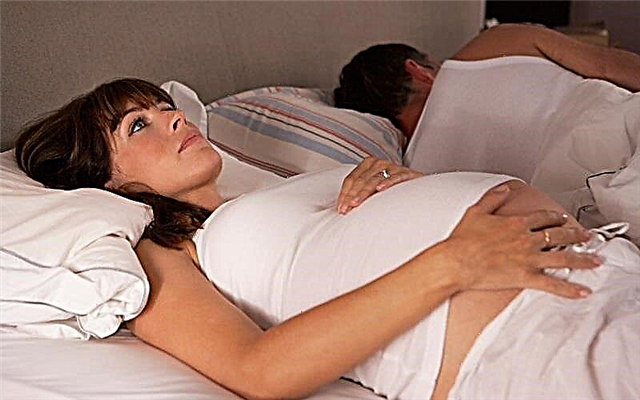
Pregnancy brings a lot of new sensations and emotions to a woman's life. Unfortunately, not all of them are pleasant, but almost all of them are natural and provided by nature. If stretch marks on the abdomen or chest pain have a completely understandable origin, then with such a manifestation as false (training) contractions, many questions arise. From this material, you will learn when they begin, why and how long they last, and also how not to confuse them with true generic ones.

What's happening?
For quite a long time, the concept of "false contractions" was unknown to doctors. There were only basic, birth pains, the purpose of which lies in the shortening of the muscle fibers of the cervix, leading to its opening. Rhythmic and regular contractions of the muscles of the uterus lead to a gradual opening of the cervix to a state in which it can miss the head of the fetus.
Training contractions that do not lead to the onset of childbirth, do not open the cervix, do not bring the moment of birth of the baby closer, were first described by the English doctor John Braxton-Hicks in 1972 in one of the London clinics. He studied them and came to the conclusion that involuntary short-term and irregular tension of the female reproductive organ during pregnancy is a completely physiological phenomenon, which is not capable of harming the mother and fetus in any way.
Training uterine contractions were named after the "discoverer" Brexton-Hicks contractions. Women themselves often call them abbreviated "sweatshirts" or "braxtons". False contractions are tensions of the uterine muscles, which occur involuntarily, pass quickly and usually do not bother women much.
Time of appearance
Usually false contractions, according to official medical sources, start after 20 weeks of pregnancy. But the training tension of the muscular walls of the uterus may well occur earlier, later. The norm is also considered a situation in which they do not appear at all.
During the first pregnancy, the muscle tissue of the main female reproductive organ is not as elastic, and therefore training contractions can be observed earlier, from about the middle of pregnancy. During the second pregnancy and each subsequent pregnancy, the muscle walls are already somewhat stretched, they are more elastic, less excitable, and therefore training contractions of the reproductive organ may not be observed almost until delivery.
For multiparous women, training contractions, if they occur, always raise much less questions, since they have experience of experiencing the true ones, and they cannot confuse them in principle.

2-3 weeks before delivery, training contractions are usually observed with varying intensity and frequency in most pregnant women, regardless of the number of births before the current pregnancy. Strengthening such contractions of the uterus is considered a harbinger of early labor. But it is not possible to calculate the date of birth from them. For some, the precursors, they "start" a couple of weeks before the birth of the child, for others - a few days, and for others - literally in the last hours.
It is the understanding that training contractions are normal that led to the common misconception that their absence is an anomaly. Often, a lady who does not feel any false contractions may be faced with the opinion that her real labor activity will not be complete, complications in childbirth may develop, since the uterus has not properly prepared for the upcoming responsible process.
These statements have no basis at all. Doctors failed to identify a direct connection between the presence of false contractions and the subsequent course of labor. Women who have not had a single false contraction give birth in the same way as women who have suffered from uterine training cramps throughout their pregnancy.

Reasons and purpose
The true reasons for the development of false contractile activity of the uterus remain unknown. The English doctor Braxton-Hicks could not figure them out, nor did his followers find the truth. Therefore, modern medicine simply accepts the existence of false contractions, but practically does not give them an intelligible explanation.
There are two theories that partially explain the training contractions and answer the question, why are they needed at all. According to the first, the most common, it turns out that with the help of short-term contractions of smooth muscles, the uterus "rehearses", prepares for full-fledged labor. The theory withstands criticism with difficulty, because it cannot explain how, then, without preparation, women give birth, who did not observe false contractions during pregnancy.

According to the second theory, false contractions are a "mind game". As the uterus grows (and during pregnancy it grows no less than 500 times!), The intensity of the blood supply to this organ increases. All this together, from time to time, leads to the formation of incorrect, erroneous commands of the brain to the nerve receptors responsible for the tension of the smooth muscles of the genital organ. The uterus, obeying the commands of the brain, comes to "readiness", but there is no hormonal support inherent in childbirth, therefore, spontaneous relaxation of smooth muscles occurs, the brain "cancels" the wrong order.

A direct connection with preparation for childbirth was found only in preliminary contractions, which usually start 8-10 hours before childbirth, sometimes later. During this period, the cervix begins to actively prepare for opening, but at the same time, the real true contractions that begin to open it have not yet begun.
Feel
Training contractions feel like a short-term tension in the uterus. Such episodes do not last long - from several seconds to several minutes. If at 28-30 weeks they can generally be single, then already at 36-37 weeks they can be repeated more often, and at 39-40 weeks they usually develop into the start of the preliminary period.
During a false contraction, a woman feels her own rigid uterus. For a long period, for example, at 34-35 weeks of gestation, a pregnant woman can usually already feel the bottom of her own uterus on the line under the breast at the time of tension of the reproductive organ.
Simultaneously with tension, a slight aching, pulling pain appears in the very lower abdomen, rarely in the lumbar region. It resembles the sensation of menstruation. A pulling sensation is nothing more than a tension on the ligamentous apparatus that holds the uterus in a stable position.
The tension falls off spontaneously, in time the contraction is not long. After a while, the tone may recur, or may not recur for several days.
Most often, according to the observations of women and doctors, training muscle activity takes place in the morning or in the evenings, when the expectant mother relaxes after an active day. From 31-32 weeks, according to reviews, false contractions can occur during the day. This is due to the fact that a woman goes on maternity leave, gets more time to rest, and the type of her physical activity changes.

Women note that very often tension in the uterus appears in such situations:
- after sex (sexual arousal and orgasm cause an increase in the sensitivity of the uterus, lead to short contractions of the musculature of the reproductive organ) - contractions are not dangerous if the woman has no other contraindications to intimate life during pregnancy;
- with a full bladder (a full bladder begins to press on the uterus, which increases its sensitivity) - going to the toilet and emptying the bladder usually helps to quickly get rid of the feeling of tension in the uterus;
- during physical activity (especially after lifting something, bending forward, down, squatting, walking stairs);
- under stress (if the expectant mother is worried, gets nervous, the release of stress hormones is stimulated in her body, the sensitivity of smooth muscles increases, tone appears);
- with complete relaxation (before bedtime, while quietly watching a movie or reading a book);
- active fetal movements (mechanical stimulation of the walls of the uterus occurs during the baby's movements).
In addition, each specific woman may have her own, individual situations. In some, false contractions start during excitement, in others after waking up while washing, and in others after eating.
What is the difference from the real ones?
It is quite easy to distinguish training episodes from real labor pains. In most cases, women themselves understand the difference when true contractions come. However, the issue of differences is one of the most pressing, especially for women who are only a few days away from childbirth.
Harbingers are always irregular. They appear, disappear, then reappear. They do not grow, do not intensify, it is impossible to trace the cyclicality and rhythm of such fights. The pain is weak, and in some it is generally invisible, the discomfort is only caused by the tension of the walls of the uterus. The localization of sensations is the lower abdomen, less often the lower back. With false contractions and precursors, a woman may well fall asleep. She is helped by a change of posture, a No-shpy pill, a warm shower, and even and calm breathing. There are no unusual discharge during a false contraction. The general condition of the woman remains normal.


True, real contractions become regular from the start. At first, they are repeated once every half an hour or less, then gradually become more frequent. The duration of each contraction from the very beginning is uniform, the same, as the labor develops, the contractions become painful, can last for quite a long time, and the rest intervals between them become increasingly short.
If the contractions are real, neither a change in body position, nor a knee-elbow position, so beloved by expectant mothers for long periods, nor an antispasmodic pill, nor a shower, will help. The contractions will steadily intensify. Localization of pain - from the back to the lower back, and from there in a girdling wave - the lower abdomen and upper abdomen.
A woman with real contractions will not be able to fall asleep, to be distracted, no matter how hard she tries. You need to go to the hospital when the contractions become obvious and are repeated every 10-15 minutes. Labor can begin with the discharge of amniotic fluid. In this case, there is no need to wait for contractions, you should immediately call an ambulance and go to the obstetric institution.
Today, there are smartphone apps that are a contraction counter and help a woman not miss the very moment when training contractions turn into true ones. These apps are free. A woman can download and install them on her phone at any stage of pregnancy.

What to do?
You don't have to do anything with training contractions. If they appear, you just need to put up with them. In most cases, they do not cause any significant inconvenience to the expectant mother. They do not affect the health of the child and do not interfere with his growth and development. They do not bring childbirth closer - everything will happen when it should happen.
If false contractions still cause some discomfort, after a preliminary consultation with a doctor, a woman can start taking No-shpa or injecting rectal suppositories with papaverine. Walking in the fresh air helps if you walk at a leisurely and measured pace. You can take a warm shower or sign up for the pool in a special group for women "in position".

Measured and deep breathing helps, stroking the abdomen with your own hand. In response to the touch of someone else's hands, the false contraction may become longer. It will be useful for a woman to give up excessive physical exertion, rest more, make sure that stress passes by.
The best "friend" of pregnant women, who often experience noticeable false contractions, is the "cat pose", in which you need to get on all fours with support on your elbows and bend your back in the lumbar region with soft and light movements and round your back. In this case, you need to breathe correctly, as pregnant women are taught in courses in the antenatal clinic.

When is a doctor needed?
It is necessary for a woman to consult a doctor if the training contractions continue throughout the day with short breaks or the whole night, if they generally cause quite unpleasant sensations and are repeated often.
Call an ambulance and immediately go to the hospital if false contractions appear against the background of bloody, brown, greenish or abundant transparent discharge.

Useful Tips
The period of false contractions can be carried out with maximum benefit. First, it's a great way to learn how to breathe properly. This skill will help in the future when real contractions and childbirth begin. Training tensions of the uterus give a woman the opportunity to better know her own body, as well as mentally prepare for real contractions.
For example, in Japan, obstetricians recommend taking training contractions as real, to imagine it that way. Then there will be no fear of labor pains. It has long been proven that the more a woman is afraid of pain, after hearing stories of "painful and terrible" contractions, the more pain she will experience when the time comes to give birth.
In order to reduce pain during natural labor pains, a woman must learn in advance to treat them calmly, be able to completely relax and "let go" of pain. This can be learned in special yoga classes for expectant mothers, in classes with a female psychologist in a antenatal clinic.

For information on how to recognize false contractions from real ones, see the next video.



